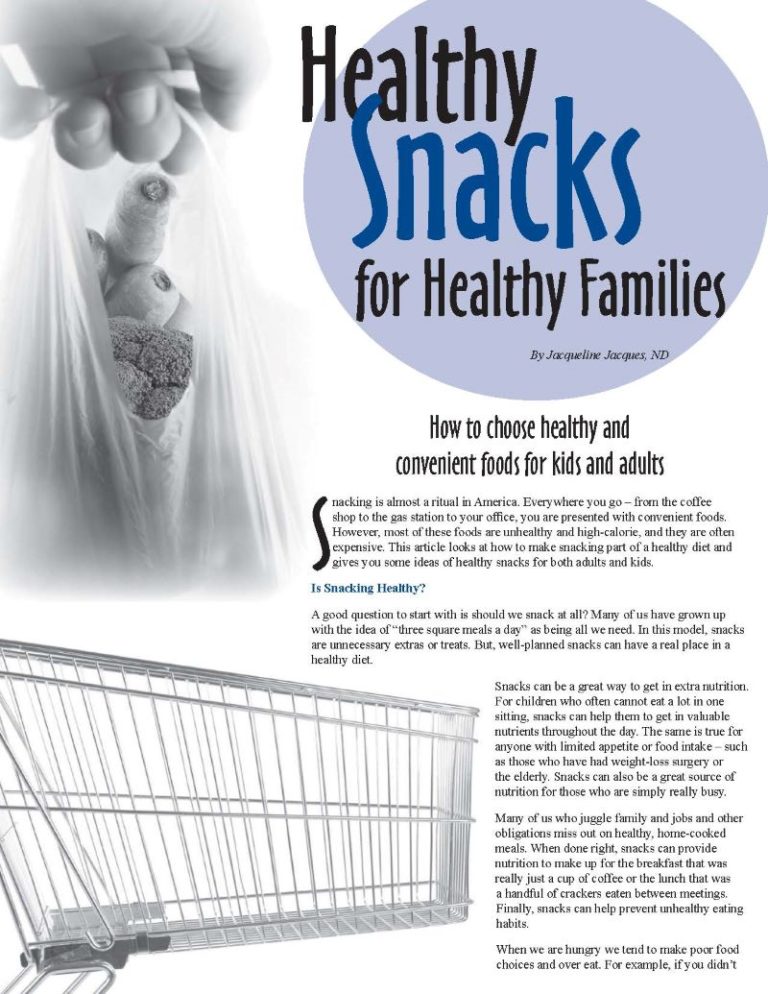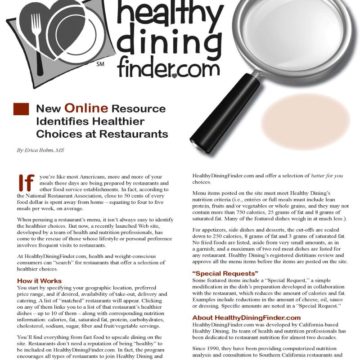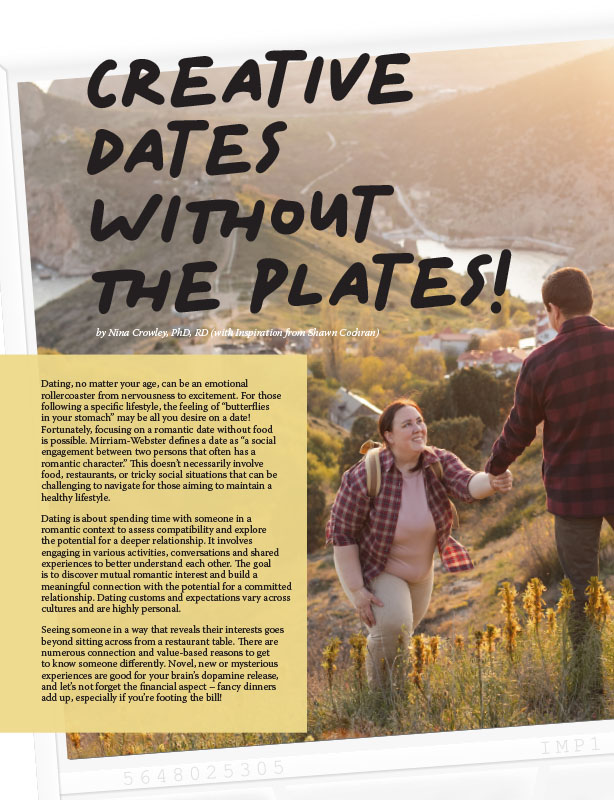Healthy Snacks for Healthy Families


by Jacqueline Jacques, ND
Fall 2007
Snacking is almost a ritual in America. Everywhere you go – from the coffee shop to the gas station to your office, you are presented with convenient foods. However, most of these foods are unhealthy and high-calorie, and they are often expensive. This article looks at how to make snacking part of a healthy diet and gives you some ideas of healthy snacks for both adults and kids.
Is Snacking Healthy?
A good question to start with is should we snack at all? Many of us have grown up with the idea of “three square meals a day” as being all we need. In this model, snacks are unnecessary extras or treats. But, well-planned snacks can have a real place in a healthy diet. Snacks can be a great way to get in extra nutrition. For children who often cannot eat a lot in one sitting, snacks can help them to get in valuable nutrients throughout the day. The same is true for anyone with limited appetite or food intake – such as those who have had weight-loss surgery or the elderly. Snacks can also be a great source of nutrition for those who are simply really busy. Many of us who juggle family and jobs and other obligations miss out on healthy, home-cooked meals. When done right, snacks can provide nutrition to make up for the breakfast that was really just a cup of coffee or the lunch that was a handful of crackers eaten between meetings. Finally, snacks can help prevent unhealthy eating habits.
When we are hungry we tend to make poor food choices and over eat. For example, if you didn’t get a good lunch and spent the afternoon hungry you may not be able to turn down the candy bar in the vending machine or find yourself taking seconds or thirds at dinner. Or, perhaps you know that at 3 pm every day you get a little sleepy and find yourself reaching for soda, or something sweet. A planned snack cannot only give you a needed burst of energy, but also helps to curb appetite with nutritious foods. This way you are less likely to over eat or reach for high-calorie nutrient-poor foods just because you are hungry.
Snacking can very easily become an unhealthy part of the diet. When snacking is not planned, it frequently consists of high-calorie, high-fat foods and drinks that do not contribute useful nutrition to your diet – but do contribute to weight gain.
The New Generation of Snack Foods
There is a new trend in snack foods that it is hard to miss if you have been in the grocery store recently: the 100 Calorie Pack. Mostly, these are small servings of chips, cookies and crackers. While these products do serve to provide a controlled portion of a food that you might normally eat a much larger serving of, they are almost always unhealthy foods. Additionally, if you look carefully, you will find that these products cost about twice as much as their full-calorie counterparts. Still, it is true that many of us will eat less when we are given smaller portions and more when we are given bigger portions regardless of how hungry we really are. So, if you absolutely must have those cookies – this is a safer bet than opening the whole bag.
Snack bars are also everywhere. Some are fine, but many are nothing more than candy bars with some added protein. Many are also shockingly high in calories and fat. If you and your family like this kind of snack, be sure to carefully read the labels.
A Few Words on Planning
It’s really easy to find a soda or a candy bar whenever you want one (or not!). But, healthy snacks are not always as convenient – and may not look as good sitting next to the chocolate chip cookie or potato chips. If you plan to have healthy snacks available in convenient locations, you will both be more likely to reach for them and less likely to reach for the unhealthy foods.
A good idea is to add a “snack” list to your grocery list. Include some things that can be in your refrigerator and cupboards, but also some portable items that can be in your car, in your child’s back-pack and in your desk drawer at the office.
One of the biggest reasons people snack on unhealthy convenience foods is because healthy options are not on hand, and you get foods you like! If you hate carrots, do not get yourself baby carrots to snack on. This is especially true when planning snacks for kids – if you want to get your kids to eat a new unfamiliar food, it is best to do this at a supervised meal like dinner or breakfast. If your kids like the snacks they have available to them, they are more likely to eat them and not beg for junk foods.
Just as important when you are planning is that “what not to buy” list. If you fill your cupboards with chips, cookies, soda and other high-calorie, low-nutrient foods, they will often get eaten instead of the healthy snacks. By not having those tempting foods available, you and your family are more likely to eat the foods that are better for you.
Snacks for Everyone
Good general ideas for healthy snacks include small servings of protein foods such as:
- Cheese slices
- Nuts and seeds
- Lean sliced meats
- Whole pieces of fruit
- Whole grain crackers
If you like the idea of convenient things that are “grab and go,” look at individual servings of applesauce, low-fat granola bars and small packets of nuts or dried fruits.
Snacking Resources
This article provides just a few suggestions for easy, healthy snacks. If you want more ideas, the Internet provides some great resources. Some of my favorites are:
- www.kidshealth.org – great suggestions for kid and teen-friendly snacks and meals.
- www.mealsmatter.org – the “Cooking for Your Family” sections has all sorts of great ideas.
- www.whfoods.com – this is the site for The World’s Healthiest Foods. This is a great place to get ideas for new healthy snack foods.
- www.familyeducation.com – this site has a wonderful section on family nutrition with snack and meal ideas.
Healthy Tip!
A better use of pre-measured snacks are the great little packets of nuts, dried fruit and whole-grain trail mixes. While many of these products are intended for kids’ lunches, they are great to toss in your purse or glove compartment for a healthy on-the-go food.
Quick and Easy Snacks Based on Calorie Levels
75 Calories:
- 1 stick of string cheese
- 3 fresh apricots
- 12 strawberries
- 1 medium orange, apple or pear
- 2 small peaches or plums
- 1 Dannon Light ‘n Fit Nonfat Yogurt (60 cal)
- 1 medium hard boiled egg
- 1 Campbell’s Soup at Hand – (Hint: a 1 to 2 cup serving of almost any non-cream soup is a great snack. Soups like chicken and minestrone are good choices.)
- 1 turkey hotdog (no bun), dipped in mustard or sugar-free catsup
- 2 cups air-popped popcorn with 1 tbsp parmesan cheese
100 Calories:
- Half an apple with 2 teaspoons of peanut butter
- Half of an avocado
- 1 medium banana
- 1.5 cups of grapes (red or green) – (Hint: grapes can be frozen whole in the summer for a refreshing treat.)
- 2 ounces of lean roast beef
- 4-6 ounces of low or non-fat yogurt (most brands)
- ½ cup of low-fat granola (most brands) – (Hint: find a brand everyone likes and measure out servings into zip-lock bags at the beginning of the week. You can also use other cereals or even mix them.)
- 1 cup of unsweetened applesauce
- 1 cup or raw vegetables with 1 to 2 tablespoon of low or non-fat dressing – (Hint: Good dipping veggies include cherry tomatoes, snap-peas, sliced red or green pepper, cucumber slices, broccoli or cauliflower pieces.)
150 Calories:
- 1/3 cup of raisins
- 2 Nature Valley granola bars (180 calories)
- 1 Nutri-Grain cereal bar
- 4 to 5 ounces sliced turkey or low-fat ham
- Handful of almonds (raw or dry-roasted, about 20 almonds)
- ½ whole-wheat English muffin with 2 tablespoons reduced fat cream cheese
- 1 cup celery sticks with peanut butter or cream cheese
- 2 graham crackers with 1 tablespoon almond butter
- 2 slices American cheese
- 1 small whole wheat pita with 2 tablespoon hummus
- 3 ounces of tuna in water with 1 tablespoon fat-free mayonnaise and 5 whole grain crackers
- 1 packet instant oatmeal
- 1 corn tortilla with ¼ cup low-fat refried beans and 1 tablespoon salsa
About the Author:
Jacqueline Jacques, ND, is a Naturopathic Doctor with more than a decade of expertise in medical nutrition. She is the Chief Science Officer for Catalina Lifesciences LLC. Her greatest love is empowering patients to better their own health. Dr. Jacques is a member of the OAC National Board of Directors.
by Sarah Muntel, RD Spring 2024 Spring has sprung, bringing sunnier and warmer days! For many, this…
Read Articleby Rachel Goldman, PhD, FTOS; Sarah Muntel, RD; and Stefanie Trilling Winter 2024 This section of Weight…
Read Articleby Nina Crowley, PhD, RD (with Inspiration from Shawn Cochran) Winter 2024 Dating, no matter your age,…
Read Article









